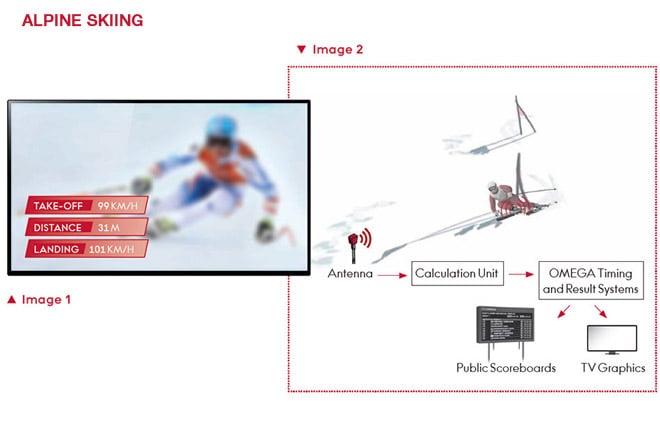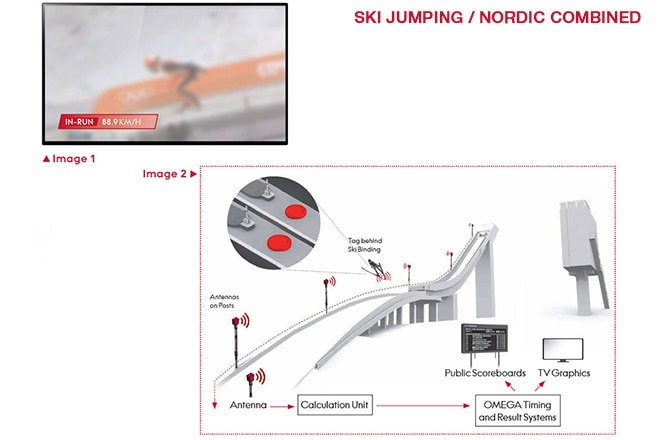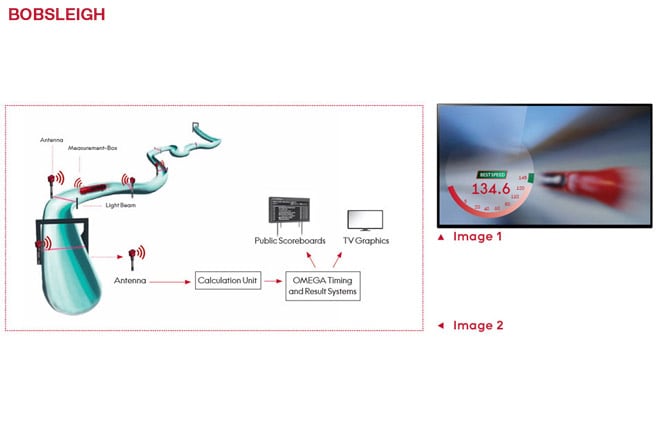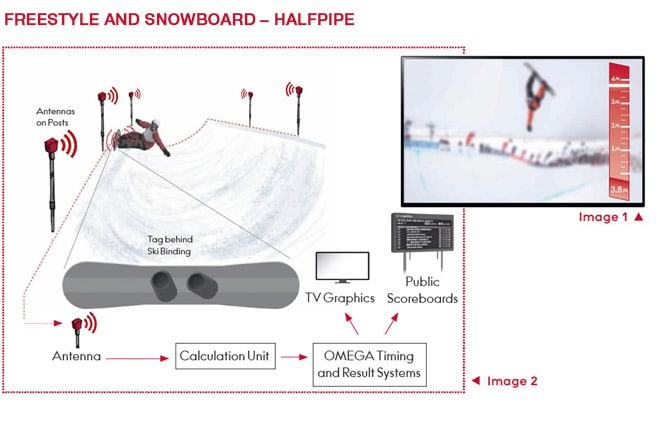Omega's New Technologies in PyeongChang

At PyeongChang 2018, Omega is paving the way for a dynamic Olympic Games future.
Through incredible sensor systems, the brand will now provide continuous measurements from start to finish of events, meaning that athletes can gain an immediate understanding of where they gained or lost time, or where they won or lost points.
From the live speed of a single alpine skier - to the formations of an entire ice hockey team – the information provided by Omega will add a brand new dimension to every performance.
Additionally, this information will mean that people in the venues, as well as those at home watching on television, can have a far greater understanding of each sport as it happens.
Everything in 2018 is about enhancing the viewer experience and providing live information that athletes can use to analyse their performances.
This is the first time at the Olympic Games that such in-depth data will be made instantly available and it is almost certainly the beginning of a brand new era.
This is what it means for each sport...
Alpine Skiing
Measurements can now include things such as acceleration and brake. But firstly, the athlete’s speed can be shown live as they start the run, and can constantly update at various intermediate points. Alongside this, the speed can also be compared to the fastest athlete at the same point.
At the end of the run, Omega can provide an in-depth run analysis that broadcasters can use to compare athletes with each other. The data can also be made available to athletes and their coaches for analysis. In addition to this, systems such as Stromotion and Simulcam will become invaluable for knowing exactly where a competitor won or lost time.
Ski Jumping / Nordic Combined
When jumping from great heights, everything has to come together perfectly for the competitor. At PyeongChang 2018, Omega will be able to provide valuable competition-relevant data for athletes and will allow spectators to zone right in on the finest details.
"In-run" speed will be one of the primary factors that might interest viewers, and this can now be displayed for each jump.
Then, as they hit the jump, the display can change to show the “take-off” speed measurement.
“At 20m” of their jump, a mid-air speed can be shown, while also highlighting how much faster, similar or slower it is compared to their “take-off” speed.
Finally, a “landing speed” will be instantly calculated and displayed. These measurements will all disappear seconds later, or when the distance measurement becomes available.
A virtual line will also be displayed across the landing zone during live coverage to show the current distance to beat.
Bobsleigh
Sensors inside each bobsleigh will be able to measure various factors including G forces, angles, trajectory and acceleration that will enable teams to understand where they won or lost time on the track.
Primarily, as the team tears downhill, repeater antennas placed along the track will transmit the bob's live speed. On television, this data can be shown as a white line on a meter, with a green tip to indicate the highest speed achieved by the current sled.
Once the sled starts to decelerate, the best speed achieved can be displayed.
If the sled beats the current “top speed” of the competition at any point in the course, this can be indicated in red.
In bobsleigh, skeleton and luge, the Sled Path system provided by Omega can also help to compare the performances between different teams. The current sled will always be shown in red, while the path of the current leader will be shown in blue. With this method, it will be possible to see the different techniques of each team.
Freestyle and Snowboard – Halfpipe
Half pipe is action packed, with manycriteria all taken into consideration whenscoring. The display that viewers will seeon screen can now include eachcompetitor’s highest jump as well as theiraverage jump height. This information willbe shown after each run has finished. Thesystem can even capture the number ofrotations in a certain jump.



